We offer medical detox and multiple addiction treatment options in our
luxury treatment centres in Port Hope, Cobourg, and Ottawa.
Biofeedback Therapy for Treating Addiction
The treatment of addiction has changed over the years, and many clinicians now prefer the use of techniques that incorporate both the mind and body. Among these approaches, what is biofeedback therapy, if not a bridge between our conscious awareness and unconscious physiological processes? This cutting-edge technique enables a patient to see and control bodily functions like heart rate, muscle tension, skin temperature, and even brain activity.
Key Takeaways
- Integrates Mind and Body: Biofeedback helps manage addiction by controlling physiological functions like heart rate and muscle tension.
- Empowers Self-Regulation: Patients gain tools to manage cravings and avoid substance use.
- Holistic Treatment: It addresses both the physical and psychological aspects of addiction.
- Personalised Techniques: Biofeedback adapts to each patient's physiological responses for effective recovery.
- Best with Comprehensive Care: It works best when combined with other recovery methods like therapy and mindfulness.
A Modern Approach to Addiction Recovery
Biofeedback therapy may sound complex, but it is founded on a rather simple principle. The therapy is useful in recovering from addiction as it helps patients identify where they feel cravings physically. People can see in real-time, through specialized devices, how stress can trigger certain physiological responses that often lead to relapse. With practice, patients learn to modify their behaviour, effectively changing the neural pathways away from substance behaviours.

For these reasons, rehabilitation centres across the country are taking up this approach. Unlike some other more traditional therapies that work on the psychological angle, this method accepts addiction as both a physical and mental disorder. The immediate visual feedback creates a tangible connection between actions and outcomes and serves as proof of achievement that many people find encouraging. Perhaps most significantly, this approach empowers patients by providing active self-regulatory tools instead of only positioning them as passive users of the therapy.
This growing effort also aligns with other trends in healthcare, which seek to provide personalized medicine and solutions that do not require pharmaceuticals. Recovery specialists continue to focus on holistic approaches in solving the multifaceted problem of addiction, while considering individual differences in treatment and providing evidence-based recovery achievements, which has certainly been in the spotlight.
How Biofeedback Therapy Helps with Addiction
When cravings strike, the body often betrays itself before the mind fully registers the urge. Muscles are tense, heart rates are high, and stress hormones are on the rise - all of which are stressful for someone in the recovery phase. With specialized monitoring techniques, one learns how to manage these symptoms when they appear in their early phases. This gives you a window to actively dampen the symptoms, like cravings, before they worsen. This helps to intercept the craving before it grows stronger. Patients are slowly taught to soothe their nervous systems in real time using targeted relaxation techniques.

The withdrawal period brings special challenges that go beyond simply psychological distress. Sleeping problems, thermoregulation, and disturbances of the autonomic nervous system may remain for weeks or months. Luckily, skin conduction and heart rate variability sessions can restore normal levels of these functions and reduce the severity and duration of physical withdrawal symptoms. This type of physiological stabilization deeply strengthens the foundations on which the psychological aspects of the recovery work rest.
Key Benefits of Biofeedback in Addiction Recovery
- Early detection of physiological craving signals before they become overwhelming.
- Reduction in withdrawal symptom severity through autonomic nervous system regulation.
- Development of personalized relaxation techniques tailored to individual stress responses.
- Improved sleep quality through regulation of brain wave patterns.
- Enhanced ability to recognize emotional states before they trigger substance-seeking behaviour.
- Increased self-efficacy and sense of control over previously automatic responses.
Furthermore, neurofeedback therapy for addiction examines the deeper neurological patterns in the framework that maintains a person's dependency on an addiction. This form of treatment focuses on how the brain functions and locates where its electrical activities are abnormal, hence leading to addiction. A lot of people who have problems with substance abuse, for example, suffer from some form of imbalance with impulse control and in the reward areas of the brain. With consistent training, the specific processes in the brain can be altered, which can help the individual in the long run by diluting their chances of relapse.

Self-control is another pillar of complete healing. People abuse substances because they have altered self-control and are unable to deal with difficult feelings. Neurofeedback for addiction assists a person to be aware of the physiological parts of emotions such as anger, anxiety and sadness. This allows the person to separate feeling from action, ensuring that there is adequate choice in a situation where there is an urge to use drugs. The result is that patients are able to help themselves through powerful emotions without needing substance.
Most importantly, achieving the sense of self-control that is often lost during addiction sets approaches such as biofeedback apart from traditional ones. Self-set regulation is a fundamental aspect of controlling yourself that also boosts self-confidence. The good thing is that this self-control begins to prevail outside the clinical context as patients manage to control their urges and, in turn, learn to eliminate stressors and activities with increasing confidence.
Types of Biofeedback Used in Addiction Treatment
Increasingly, treatment facilities are providing more approaches focused on each dimension of the recovery process. Each modality provides a different set of processes for rehabilitation by focusing on specific physiological systems linked to substance abuse.
Neurofeedback (EEG biofeedback)
The most technologically advanced option remains EEG biofeedback, which involves monitoring the brain as it performs electrical activities on different parts of the head. Sensors placed on the scalp detect imbalances in brain wave patterns that often correlate with addictive behaviours. Many individuals grappling with substance abuse are found to have too much fast-wave activity, which is linked to anxiety and hyperactivity, as well as not enough slow-wave activity, which is needed to feel relaxed and focused. In every session, subjects engage in mental exercises whose objective is to alleviate these patterns while being shown their brain activity on a monitor. In the long run, there is improvement in the efficiency of brain functioning, decreased cravings, and improved emotional well-being without the use of drugs.

This form of EEG biofeedback, sometimes called brain wave therapy for addiction, has shown particular promise for substances that directly impact neurological function. It is believed to help restore the dopamine regulation systems, which are damaged due to the use of stimulants and in calming overactive brain regions typical for recovering alcohol dependents. Being able to show the neural activity visually makes the idea of “healing the brain” more concrete for the patients and, as a result, enhances their willingness and compliance with treatment.
Heart Rate Variability (HRV) Training
Heart rate variability training concentrates on the functioning of the cardiovascular system in relation to specific emotional states. Many recovering patients demonstrate low heart rate variability – fluctuation between heartbeats – which suggests the patient is in a severe “fight or flight” state. Patients are taught to artificially increase heart rate variability through symmetric breathing exercises in conjunction with real-time displays of heart rhythms. This switch puts the body into a calmer, “rest and digest” state. This skill is of utmost importance whenever an individual encounters intense craving or emotional upheaval that would otherwise make them relapse.
Electromyography (EMG) for Muscle Relaxation
Electromyography can provide relief for those suffering withdrawal or anxiety-related physical tension. Small electrodes placed on the chronically tense muscle group allow for immediate biofeedback when tension is detected, which may occur before the individual is mentally aware. With this information, patients can employ progressive relaxation techniques until the monitor demonstrates a drop in electrical activity in the muscles. Relieving physical distress often reduces the psychological distress that initiated the cycle of substance seeking.
More advanced programs integrate these approaches, helping to formulate more complex treatment protocols for patients that can address more than one physiological system at a time. This dual approach is mindful of the profound connection that substance dependence has on the whole being, which in turn demands equally elaborate recovery means.
Who Can Benefit from Biofeedback Therapy?
While not universally appropriate for everyone, certain populations find these physiological self-regulation approaches particularly valuable during recovery.
Individuals at various stages of substance recovery often experience significant gains. Those in early abstinence use these techniques to manage the intense physical symptoms of withdrawal that frequently trigger relapse. Neurofeedback for substance abuse proves especially helpful for stimulant users who face protracted recovery from dopamine system disruption.
People managing both chemical dependency and psychological conditions represent another group showing promising outcomes. The complex interaction between anxiety disorders and substance use creates a challenging cycle where each condition exacerbates the other. Biofeedback therapy is very effective in dealing with hyperarousal associated with anxiety as well as substance use-induced dysregulation.
Patients frequently turn to these methods in need of or in search of a complement to them. Some patients are unable to receive drug therapy due to medical contraindications, past adverse effects or pregnancy.
Implementation Considerations
Practical considerations also influence suitability. Participants must commit to the regular practice of biofeedback therapy exercises between formal sessions for optimal results. Those with severe cognitive impairments may struggle with the required self-awareness and learning components. Financial factors sometimes play a role as well, as insurance coverage varies widely, though many centres now offer sliding scale options.
Certain personality traits correlate with better outcomes. Individuals with an internal locus of control – those who believe their actions significantly impact their circumstances – typically engage more fully with the process. Curiosity about mind-body connections and openness to non-traditional approaches similarly predict stronger treatment adherence. That said, even sceptical participants often become enthusiastic advocates after experiencing measurable improvements in their physical and emotional regulation.

Getting Started with Biofeedback Therapy
Beginning this self-regulation journey requires finding qualified practitioners and understanding how these approaches complement other treatment modalities.
Finding Qualified Practitioners
Look for a certified biofeedback specialist with credentials from recognized organizations such as the Biofeedback Certification International Alliance or the International Society for Neurofeedback Research. When working with an independent biofeedback therapist, prioritize those experienced in treating substance use disorders.
Initial consultations should cover specific techniques offered, commitment expectations, and realistic timelines for results. Qualified practitioners explain their methods clearly while setting reasonable outcome expectations.
Integration with Comprehensive Treatment
These approaches work best within multifaceted recovery programs. Effective integration includes:
- Coordinating biofeedback therapy exercises with psychotherapy sessions.
- Aligning nutritional support for optimal nervous system function.
- Incorporating mindfulness practices that reinforce self-regulation.
- Ensuring medication protocols complement biofeedback goals.
Regular communication between all providers enables adjustments based on progress and challenges. Many find tracking both physiological measurements and subjective experiences helps identify patterns.

Specialized Support Resources
For personalized guidance, the Canadian Centre for Addiction offers expert consultation services. Their interdisciplinary team can assess individual needs, recommend appropriate modalities, and connect clients with qualified practitioners.
Many begin with structured programs before transitioning to independent practice. As skills develop, these techniques become valuable self-management tools supporting long-term recovery.
FAQ
How long does it take to see results from biofeedback therapy?
Subtle improvements often appear within 8-12 sessions, while significant addiction-related changes typically require 20-30 sessions over 3-6 months. Progress varies based on session frequency, home practice consistency, and individual factors.
Does insurance cover biofeedback?
Coverage varies significantly between providers and plans. However, many insurance companies cover these techniques when prescribed for specific conditions, particularly in comprehensive addiction treatment programs.
Can biofeedback eliminate the need for medication in addiction treatment?
While these approaches help many reduce medication dependence, they shouldn't be viewed as universal replacements. Some individuals benefit most from combined approaches where medications manage acute symptoms while biofeedback builds long-term skills.
What happens during a typical biofeedback session?
Sessions last 45-60 minutes, beginning with sensor placement and baseline readings followed by guided exercises targeting your unique physiological patterns. You'll receive coaching on technique refinement and homework assignments to practice between sessions.
How does biofeedback compare to other addiction treatments?
Biofeedback complements established approaches by addressing physiological aspects of addiction that other treatments might not directly target. It provides objective measurement of progress while building concrete self-regulation skills applicable across multiple life domains.






